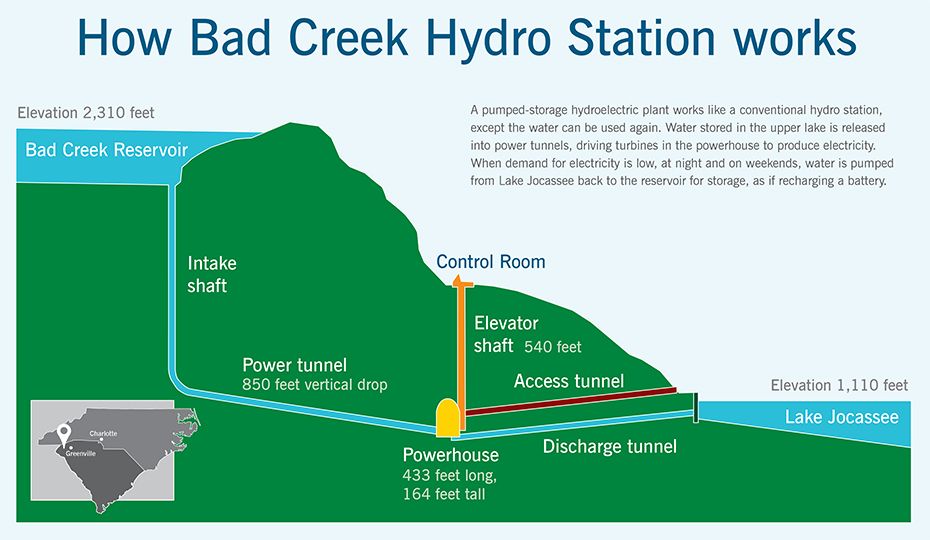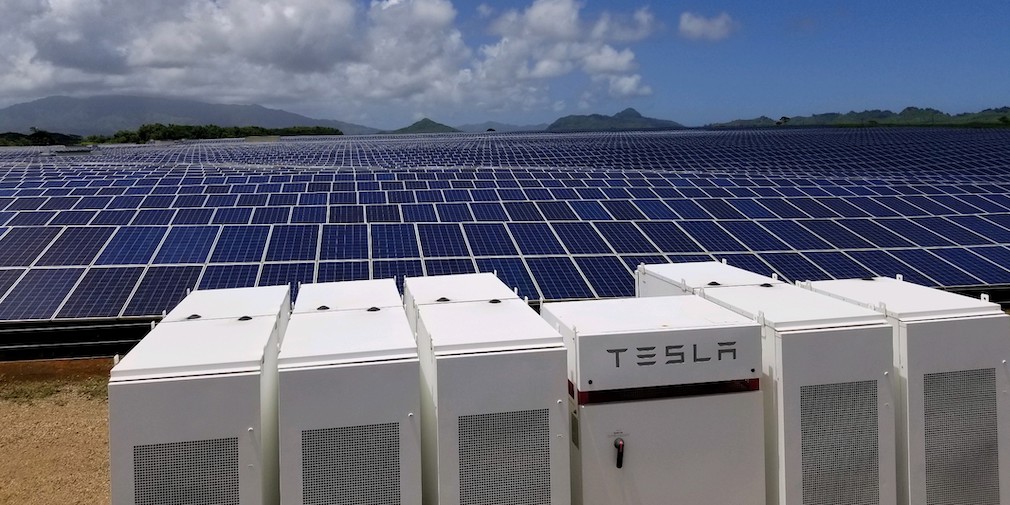In an application to the North Carolina Division of Air Quality in an application to modify the air quality permit at the H.F. Lee power plant in Goldsboro, N.C., it was solar energy took a hit from Duke Energy. Duke researchers concluded that on days of maximum solar output, more nitrous oxide (NOx) is emitted than if no solar electricity was used, and natural gas was used instead. The issue that led to this conclusion? Ramping.
It’s true that ramping is generally bad, as a lot of energy is wasted and pollution is created with the frequent up-and-down scaling of traditional power plants, but the conclusions reached by Duke reflect scenarios where the only resources on the grid are solar and traditional generation.
If only there was some solution. Some way in which the peak generation of a solar plant could be moved or shifted a couple of hours later in the day when generation dips, demand increases and ramping begins. Enter solar energy’s best friend: the battery.
Funny enough, last month Cypress Creek presented to the North Carolina Utilities Commission the avoided costs from installing energy storage at an already existing utility scale solar power plant. And while avoided costs aren’t what Duke is worried about, solar efficiency is, which was also a topic covered by Cypress Creek in its presentation.
In a hypothetical example modeled in the NCSU Storage Study, a 3 MW/3 MWh DC-coupled battery added to a solar facility with an AC rating of 7.1 MW and a 1.4 ILR reduced solar clipping by at least 80% and significantly increased the share of time the facility generated maximum AC output, from 29% of the time without storage to 47% with storage.
The solar power plant was a 100% dispatchable resource for almost 12 hours with the above configuration. 100% dispatchable for 12 hours is enough to cut down on serious levels of ramping, were the modeled example to be put into practice for larger power plants across a statewide area, rather than one isolated unit.
You know what other functions provided by batteries can help to cut down on constant start-and-stop scaling?
- Bulk energy time shifting
- Peak capacity deferral
- Solar clipping
- Flexible ramping
- Frequency regulation
- Voltage support and control
- Circuit upgrade or capacity deferral
- Transmission investment deferral
- Transmission congestion relief.
These are all services provided by vast deployment of energy storage measures. What’s more is that this model is only accounting for solar + storage. Wind and hydropower both add resiliency for days where solar isn’t generating at maximum capacity, and power from these sources can also be stored in batteries and other storage technologies.
In Duke’s defense, the company’s most recent integrated resource plan includes $500 million in battery projects listed over the next 10 years in the Carolinas.
Speaking of other storage technologies, let’s end by looking at another renewable source ignored when looking at a strictly solar + fossils scenario: pumped hydro storage.
A pumped hydro storage plant releases water stored at a reservoir at the top of the plant, down through a powerhouse, where the energy of the rushing water turns a turbine to generate electricity. Pumped hydro storage is the most widely deployed form of energy storage in the United States. And not only is it relatively cheap, but it pairs well with solar energy, due to its ability to accommodate hour-to-hour shifts in the supply/demand balance.

But what about when all the water has been rushed out of the reservoir? The plant uses excess energy during times of low demand and high production to pump water back from the lake to the reservoir. Then, when demand increases again, the water is released back down to create the necessary energy.
Now the drawback to pumped hydro is that it isn’t instantaneous, as the water must flow for energy to be produced. For Duke’s Bad Creek Hydroelectric Station, the process takes about 15 minutes. Yet again, however, we aren’t talking about just solar and pumped hydro.
The energy revolution is like a band. Alone keyboards, guitars, drums, bass and horns sound fine, but they don’t truly get the job done, same with just one of solar, wind, hydro, pumped-hydro and batteries. But nobody is asking for just one or two, the beauty comes in all 0f these wonderful sources covering one another’s shortfalls, allowing their own strengths to shine.
This content is protected by copyright and may not be reused. If you want to cooperate with us and would like to reuse some of our content, please contact: editors@pv-magazine.com.









Another storage technology that’s been around for a long time but gets very little attention is thermal batteries. Thermal batteries are large tanks of water that are frozen “off-peak” and used to air condition buildings “on-peak”. This technology is well proven, has been around for decades, and should be used wherever there is a large air conditioning load in a building.
FAFCO has been in this business for decades, but most of our business is in Asia where there are consistent energy policies which help drive the implementation of the technology.
The US should include thermal batteries as a serious part of its storage portfolio.
The argument that solar causing ramping ignores it has to ramp just as much or more without solar, as the load is constantly
changing too.
So solar won’t increase ramping at all compared to normal generation.
And most very short term variation is taken care of with natural grid impedance and slight voltage variations
Thanks for the softball take-down of this latest ridiculous argument by Duke Energy. A couple other points:
— Duke’s concern about NOx emissions is curious considering that the company never, ever takes into account fugitive methane emissions from the gas it is consuming.
— Duke is trying to effectively block solar developers from adding storage to existing solar farms by requiring them to renegotiate their contracts at current (lower) avoided cost rates.
— It’s faint praise to applaud Duke’s $500 million investment in storage in the Carolinas over 10 years when the company’s planning to spend $5 billion of customer money on new gas-fired power plants that we don’t need. That would buy a lot of solar and storage!
Natural gas because it is about 95% methane (86x greenhouse gases of CO2) is in many cases worse than coal for climate change. My scientist colleagues, uniformly reject natural gas as a solution to climate change. Dr. Harvard Ayers, retired Professor Emeritus, Appalachian State University, Boone, NC
You and Sally Robertson seem to be on the same page. I find it interesting how Duke Energy acts across the country. On the east coast it’s, let’s use our existing assets under ACE 20 for a ‘few’ more years. Pushing for more natural gas fired generation on the east coast. Now on the west coast and in Texas Duke Energy just loves that wind generation and solar PV in California and Texas wind. Duke seems to be standing in the middle of the teeter-totter and leans towards where ever the money happens to be coming from at the moment.